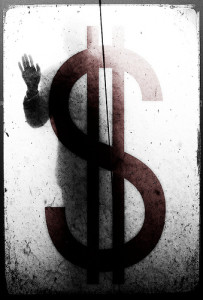Independent vs Traditional Publishing: Royalty and Pricing
(Part of the indie vs trad series.)
Here’s the bit that everyone is interested in: the bottom line. What you get to take home from your book sales.
This is a two-fold subject: what price is set on your book, and what percentage of that price comes to you as the author. These together feed into the profit you are likely to make, and there are some trends that are worth keeping in mind.
Pricing
Price matters, for many reasons. Remember, as an author, what you get is a percentage of the book’s price, not a fixed return. The price tag can also influence reader expectations and perception of the story.
As with so many of these posts, control rests with the self-published author. Whether you’re going electronic or paper, you get the final say about what your book’s price is. You can offset your costs or not; it’s up to you. Print-on-demand (POD) publishers will usually restrict you to the cost as a bare minimum, and some stores won’t allow you to list books as free (Amazon, I’m looking at you), but for the most part, you’re free to manipulate it however you wish.
When going traditional, however, you have no input. Your book price is determined entirely by the publisher (and sometimes the store). You have no control over promotions or offers. When a paper book isn’t selling and it is returned by the bookstores, publishers usually mass-reduce the price to get rid of the stock.
On the other hand, traditional publishers should know where to pitch a book’s price in the market. They are, after all, in the business of making money from sales. So it seems like they know what they’re doing. Doesn’t it?
In the ebook realm, traditional publishing has come under fire because they tend to price their ebooks over the odds (and in some cases, above the paper book price). They consistently price above the ‘norm’ for ebooks, and Smashwords did an interesting analysis of the effect that this has on sales (and the knock-on to author profits). The analysis shows that lower ebook prices not only net increased sales, but significantly larger returns for the author.
The real questions: do you trust the traditional publishers to do what’s best for you and your book? Do you want to maintain a hand on the reins when it comes to price? Do you think you can manage your book well enough to do what’s best for it?
Royalties
Okay, so you have an idea about how much you care about controlling your book’s price. But what does that really mean when it comes to the money in your pocket?
With traditional publishing, you’re looking at 10-15% of the book price for paper and ebooks. Out of this percentage, you have to pay your agent, if you have one (usually 10-15% of whatever you get). The publisher’s portion of the book price goes to cover the costs associated with your book (check out the Services post for more on this), the publisher’s own costs and commission, distribution, and retailer commissions.
With self-publishing, royalties are usually 50-80% of the book price. The rest goes to distributors and retailers, who work on commission, and a publisher to cover the printing costs if you’re doing paper books. The norm is 60-70% for ebooks, though Amazon has a 35% royalty level (which they’re pushing authors towards, but that’s a rant for another post), and the highest I’ve seen is 85%. Self-publishing paper books is usually lower than this (I don’t have exact percentages, but the printing costs are a big chunk of the price and the profit is whatever you price above that cost).
As with all things in publishing, it’s not always as simple as it looks. When it comes to paper books, a traditional publisher’s distribution network and marketplace presence is likely to net you a lot more sales than self-publishing. I don’t have figures to compare average take-home rates – I’m not convinced they exist, because I don’t know what a ‘typical book’ would look like for realistic comparison – but chances are, traditional publishing is going to win out on the net profit here (for authors, that is).
For ebooks, it’s a different story. The distribution available to self-publishing authors means that the reach can, potentially, rival traditional publishers. Again, check out the post on the Smashwords blog about pricing and returns, and the effect on profitability. The disparity in the royalty rates means that self-publishing authors get a lot more than those signed with traditional publishers at the end of the day.
The real question: which royalty rate is going to get you the best returns?
Personally, I lean towards the self-publishing side in the ebook realm. Traditional publishing is still floundering in ebook stores and they have a lot of lessons to learn from before they’ll be as effective as they could be there. This is the area where an indie author can shine; and they do.
Next up: Contracts
Comments are closed!
